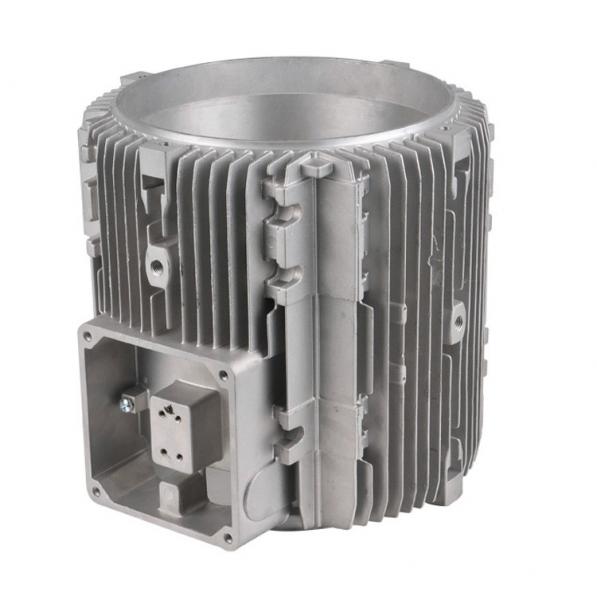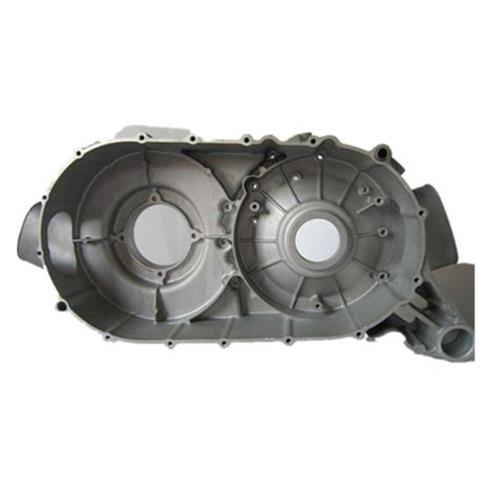Exploring Aluminum Casting: Techniques, Treatments, and Applications
Aluminum casting is a versatile and widely-used manufacturing process that involves pouring molten aluminum into a mold to create a desired shape. This process is favored in various industries due to aluminum's favorable properties such as light weight, high strength-to-weight ratio, corrosion resistance, and excellent thermal conductivity. In this blog post, we will explore the different aluminum casting techniques, discuss the feasibility of heat treatment, examine surface treatment methods, and highlight its applications across various sectors. We will also touch upon the advantages and future prospects of aluminum casting in China.

Aluminum Casting Techniques
There are several aluminum casting techniques, each with its unique advantages and applications. Here are some of the most common methods:
1. Sand Casting: This is one of the oldest and most versatile methods. It involves creating a mold from sand and pouring molten aluminum into it. Sand casting is cost-effective for small production runs and is suitable for large parts and complex shapes.
2. Die Casting: In die casting, molten aluminum is forced into a metal mold under high pressure. This technique is ideal for producing high-volume, precision parts with excellent surface finishes and dimensional accuracy. It is commonly used in the automotive and aerospace industries.
3. Permanent Mold Casting: This method uses reusable metal molds to produce parts with better mechanical properties than sand casting. Permanent mold casting offers a good balance between quality and production cost, making it suitable for medium-volume production.
4. Investment Casting: Also known as lost-wax casting, investment casting involves creating a wax model of the part, coating it with a ceramic shell, and then removing the wax to form a mold. This technique allows for intricate designs and is used for components requiring high precision.
5. Centrifugal Casting: This process involves pouring molten aluminum into a rotating mold, which uses centrifugal force to distribute the metal evenly. It is ideal for producing cylindrical parts such as pipes and bearings.

Heat Treatment of Aluminum Castings
Heat treatment can be applied to aluminum castings to enhance their mechanical properties, such as strength, hardness, and ductility. Common heat treatment processes include:
- Solution Heat Treatment: This process involves heating the casting to a high temperature to dissolve alloying elements, followed by rapid cooling or quenching.
- Aging: After solution heat treatment, aging is performed at a lower temperature to precipitate the dissolved elements, improving the material's hardness and strength.
- Annealing: Annealing is used to relieve internal stresses and improve ductility by heating the casting to a specific temperature and then slowly cooling it.
Not all aluminum alloys are suitable for heat treatment; it depends on their composition. Thus, selecting the appropriate alloy is crucial for achieving desired properties through heat treatment.
Surface Treatment Methods
Surface treatments are essential for enhancing the appearance and performance of aluminum castings. Some common surface treatment methods include:
- Anodizing: Anodizing is an electrochemical process that forms a protective oxide layer on the surface of aluminum, improving corrosion resistance and allowing for coloring.
- Powder Coating: This method involves applying a dry powder to the casting surface and curing it under heat to form a protective layer. Powder coating offers excellent durability and aesthetic appeal.
- Polishing: Polishing improves the surface finish of aluminum castings by removing imperfections and providing a smooth, shiny appearance.
- Painting: Painting provides an additional protective layer against corrosion and allows for customization in terms of color and finish.
Applications Across Various Sectors
Aluminum casting finds applications in numerous industries due to its advantageous properties:
- Automotive Industry: Aluminum castings are used in engine blocks, transmission cases, wheels, and other critical components due to their lightweight nature, which helps improve fuel efficiency.
- Aerospace Industry: The high strength-to-weight ratio of aluminum makes it ideal for aircraft components such as fuselages, wings, and engine parts.
- Consumer Electronics: Aluminum castings are employed in the production of housings for smartphones, laptops, and other electronic devices due to their sleek appearance and thermal conductivity.
- Construction: Aluminum castings are used for architectural elements such as window frames and curtain walls due to their durability and resistance to environmental conditions.
- Energy Sector: Aluminum castings are utilized in wind turbine components, solar panel frames, and other renewable energy applications because of their strength and corrosion resistance.
Advantages and Future Prospects in China
China has emerged as a global leader in aluminum casting production due to several advantages:
- Abundant Resources: China has rich bauxite reserves, providing a steady supply of raw materials for aluminum production.
- Advanced Manufacturing Infrastructure: The country's well-developed manufacturing infrastructure supports large-scale production with advanced technology.
- Competitive Costs: Lower labor costs and economies of scale contribute to cost-effective production in China.
The future prospects of aluminum casting in China are promising, driven by increasing demand from automotive, aerospace, and electronics industries. As environmental concerns rise, the lightweight nature of aluminum will continue to be a key factor in reducing emissions and improving energy efficiency. Additionally, advancements in casting techniques and materials will further enhance the capabilities of aluminum castings.
In conclusion, aluminum casting is an essential manufacturing process with diverse applications across multiple industries. By understanding the various techniques, treatments, and applications, manufacturers can leverage the benefits of this versatile material to meet evolving market demands. As China continues to play a pivotal role in the global aluminum casting landscape, its advantages position it well for future growth and innovation in this field.
Dongrun Casting has 20000 square meters of facility houses and 200 production & test equipment, From quotation and tooling design to casting and finished machining, we can work with you at every stage. We serve a wide range of industries-from Fortune 500 corporations to small and midsize OEMs. Our products include Automotive&trucking, Electric Utility & Communications, Metering Systems, the Hydraulic Industry, Medical Devices, Lighting, Fuel and Gas Pressure, and Furniture parts.
More Details: www.dongruncasting.com
